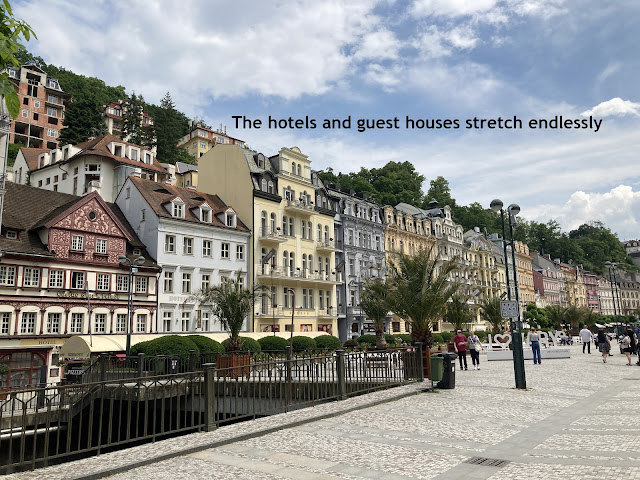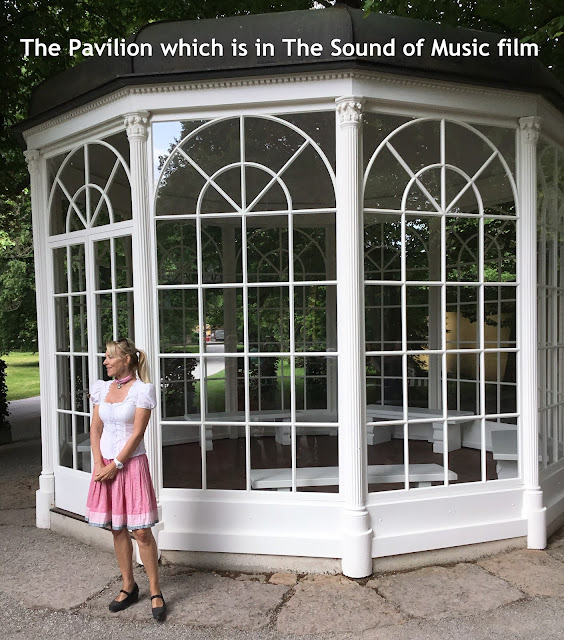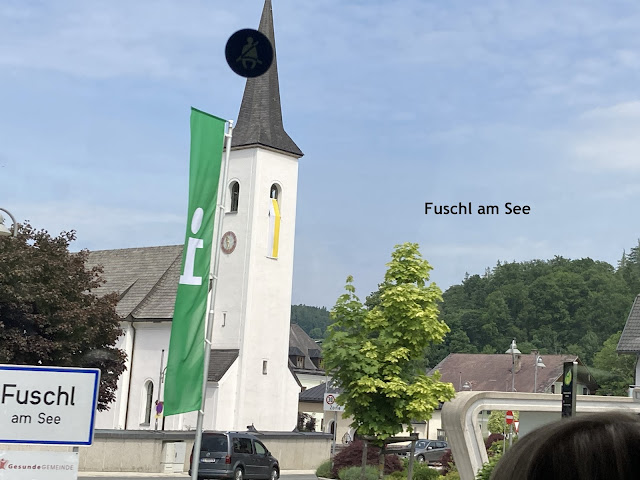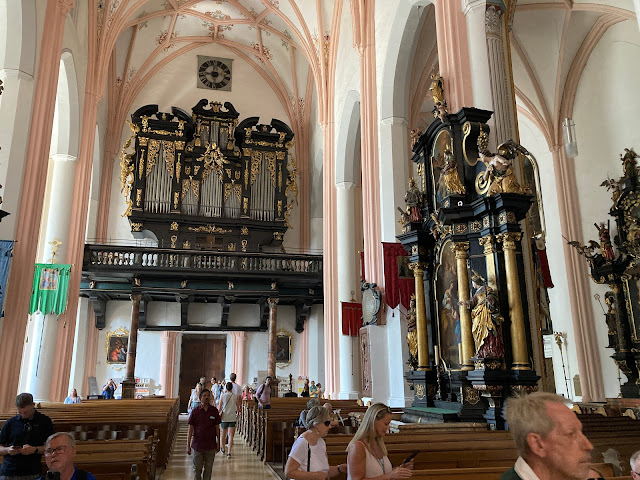Eons
ago, I had taken my daughter to Prague after her graduation as it’s a beautiful
city and we went to see the Moser Glass works as I love crystal ware. We splurged as we both love crystal and Moser has
its own special charm and beauty. This time, I wanted to show Moser to my wife,
even though she hates my collecting glass, as a ruse to possibly convince her
to buy a piece for me. But fate dictated otherwise – the booking for the visit
turned out to be the day before the scheduled trip to Karlovy Vary; hence we missed
the glassworks tour!!
We
were at the upper end. Trying to find a place where money could be changed and
the tourist office (for a guide) led us downhill, all the way to the real
centre. Very few people about… luckily for us as this is a really popular spa
town.
We walked and we walked and walked. It was getting tiring as the locals went on pointing to a tourist office in the distance! It was really frustrating.

As you near the end of the long road, you come across a canal. On the
far side, stretch many hotels all offering spa facilities. Then, comes a garden
with this Castle like hotel, and the spa waters in water fountains available
for anyone to drink. These are covered under many different style structures –
all very ornate.
“Císařské lázně is the most important spa building,
protected as a national cultural
monument. It was built in
the historicist style of the French Neo-Renaissance in
1893–1895. The largest colonnade with five mineral springs is the Mill Colonnade - a pseudo-Renaissance structure, built
in 1871–1881. The best-known spring is Vřídlo, located in Hot Spring Colonnade built
in Functionalistic style in 1975. The spring gushes out in
a geyser up to 12 m (39 ft) high. Other colonnades in the city are
Park Colonnade (Sadová; cast-iron
architecture structure
built in 1880–1881 by Fellner & Helmer), Market Colonnade (Tržní; a wooden
structure, built in Swiss style in 1882–1883 by Fellner & Helmer), and
Castle Colonnade (Zámecká; built in Art Nouveau style in 1910–1912 by Friedrich Ohmann)” source Karlovy Vary town data.
“Karlovy Vary is
the site of numerous hot springs (13 main springs, about 300 smaller springs, and
the warm-water Teplá River) and is the most visited spa town in the Czech
Republic. The historic city centre with the spa cultural landscape is well
preserved and is protected by law as an urban monument reservation. It is the largest spa complex in
Europe. In 2021, the city became part of the transnational UNESCO World Heritage
Site under the
name "Great Spa Towns of Europe" because of its spas and architecture from the 18th
through 20th centuries.
The city map shows how the river
meanders through the town . It has welcomed such
figures as Goethe, Beethoven, Gogol, Paganini, Casanova, and Mozart along with
dozens of heads of state, while in recent times it has hosted many movie stars
thanks to its Karlovy Vary
International Film Festival which is one of Europe’s
most important.
This is a panorama shot of the town bordering on each side the canal.
We finished sightseeing with about two hours to spare before the coach back to Prague. We asked a cab driver to take us to the coach station as rain was imminent and we did not want to walk back -- I could not see any cabs around. He said it was better to enjoy a local pastry at the Elefant café opposite and he would definitely wait for us. So, relaxed with the knowledge that our ride was waiting, I enjoyed an apple pie with ice cream, an Elefant chocolate truffle cake and a hot chocolate drink. My wife had a delicious quiche and tea. Artem, the cabbie, a refugee from Ukraine, was true to his word. He took us around the town and dropped us at the coach station which was adjacent to the train station. As we had fixed reserved seats, we did not have to worry about the bus being packed on the way back.
I leave you with these
mouth watering photos of the various pastries one can enjoy. The menu actually
had 15 such delectable items but I thought that would be too much for you to
bear!
If you do go to Karlovy Vary, do ask for Artem - he will make your trip memorable.
























































